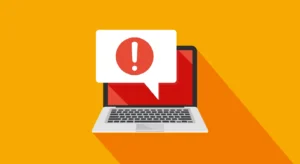Acquisitions are Everywhere
Acquisitions and mergers are as common in 2016 as reality shows and prime-time talent competitions. There are seemingly thousands announced every month, and while there are many inherent benefits as a result of these complex transactions, there are also more than a few unique pain points created as a result, particularly when it comes to enterprise software.
When a one company acquires another, they typically either keep the acquired company running on a separate ERP from the main company, or they convert the acquired company to the main company’s ERP. This can be a cumbersome and time-consuming process. Basing all business operations on a single ERP is desirable because it creates one source for customer and financial information. The seamlessly integrated technology can help fuse the organizations together.
Merging ERPs Isn’t Always the Best Choice
Businesses are more complex than ever in this day and age. Because of this complexity, a single system isn’t aways the best way to address a company’s business needs. In many instances, it simply is not in the best interest of a company to attempt to consolidate these different functions through one ERP vendor. When you go a level deeper and consider the efficiency of best-of-breed enterprise software solutions that address specific business functions, such as human resources or supply chain management, it’s easy to see why migrating to one ERP is not the best option in many acquisition situations.
To Merge or Not to Merge?
The truth is that the challenges faced with one ERP or multiple ERPs in an organization are essentially the same:
- The treasury department will struggle to grasp potential capital requirements for payments coming due, and
- The accounts payable (AP) team won’t know which discounts it is missing, what is coming due soon, and what payments are in danger of being late and incurring a financial penalty
When you have more than one ERP across a single organization, these challenges are multiplied. It becomes even more difficult to gain visibility into invoices and payment statuses than it would be with a single ERP.
AP Automation Solutions
An accounts payable automation solution can sooth this pain. At DataServ, we solve these issues for our clients by providing them with additional visibility over all invoices in process. This can be done regardless of which ERP they will ultimately be paid from. We do this via our Invoice Processing Machine with optical character recognition (OCR) function. This system centralizes invoice receipt and data capture and provides anywhere from 30-45 days increased visibility into potential upcoming payments due.
Period close accruals can also become much easier in a multiple ERP environment. AP and other departments will have the ability to see who has what invoice, what general ledger allocation has been made for that purchase, and what period that will be accrued in to expedite closing.
If your organization is dealing with multiple ERP’s, the flexibility that a Software as a Service (SaaS) AP automation solution offers can provide significant relief.








